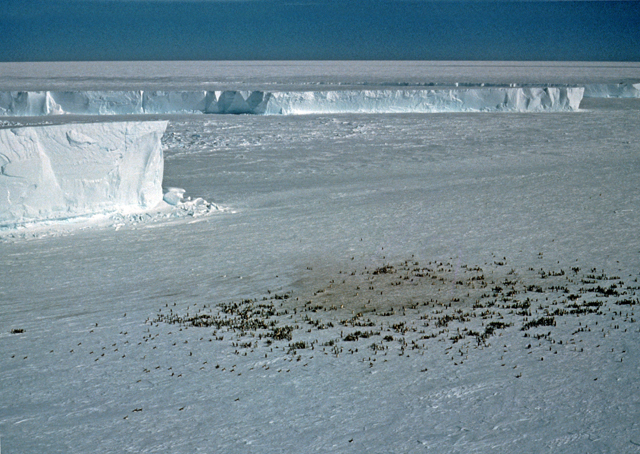The poop on penguinsBAS scientists identify new emperor colonies using NSF-funded map mosaicPosted June 5, 2009
Penguin guano stains, visible from space, have helped British scientists locate emperor penguin breeding colonies in Antarctica. The researchers used satellite images downloaded from the Landsat Image Mosaic of Antarctica (LIMA) The National Science Foundation In a study published this week in the journal Global Ecology and Biogeography, scientists from BAS describe how they used the LIMA satellite images to survey sea ice around 90 percent of Antarctica’s coast to search for emperor penguin colonies. The survey identified a total of 38, which included 10 new colonies. Of the previously known colonies, six had re-located and six were not found. “We can’t see actual penguins on the satellite maps because the resolution isn’t good enough,” explained BAS mapping expert Peter Fretwell in a news release. “But during the breeding season, the birds stay at a colony for eight months. The ice gets pretty dirty, and it’s the guano stains that we can see.” Emperor penguins spend a large part of their lives at sea. During the Antarctic winter, when temperatures drop to minus 50 degrees Celsius, they return to their colonies to breed on sea ice, but this is a time when it is most difficult for scientists to monitor them. The LIMA map is a realistic, nearly cloudless satellite view of the continent stitched together from nearly 1,100 images captured by the NASA-built Landsat 7 satellite mainly from 1999 to 2001. The Landsat Program |



For USAP Participants |
For The Public |
For Researchers and EducatorsContact UsU.S. National Science FoundationOffice of Polar Programs Geosciences Directorate 2415 Eisenhower Avenue, Suite W7100 Alexandria, VA 22314 Sign up for the NSF Office of Polar Programs newsletter and events. Feedback Form |


